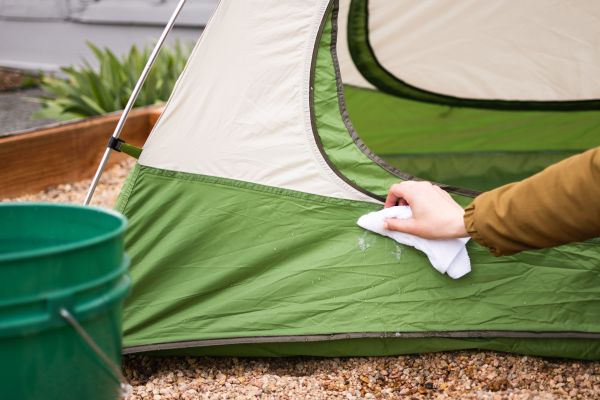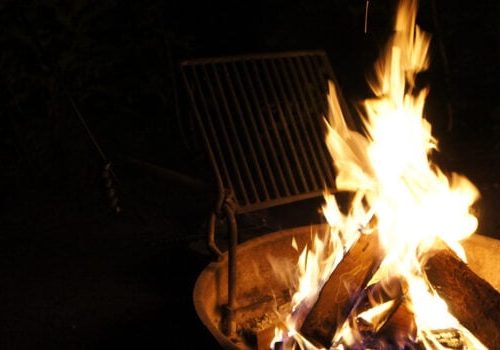Cleaning a tent is an essential part of its maintenance, ensuring its longevity, functionality, and hygiene. Tents can accumulate dirt, grime, mold, mildew, and odors from extended use, particularly in harsh outdoor environments. How to clean tent is very important topic to know for every campers. This comprehensive guide will detail the steps required to clean a tent properly, covering everything from preparation and materials needed to specific cleaning techniques and post-cleaning care.
Materials Needed
Before you start cleaning your tent, gather the necessary materials:
- Mild Soap: Use a non-detergent, mild soap. Specialty tent soaps like Nikwax Tech Wash or Gear Aid ReviveX Pro Cleaner are ideal.
- Sponge or Soft Cloth: Avoid abrasive scrubbers that can damage the tent fabric.
- Soft Brush: A soft-bristled brush can help with stubborn spots.
- Large Tub or Bathtub: This is for soaking the tent.
- Garden Hose or Showerhead: For rinsing the tent.
- Buckets: For mixing soap and water.
- Towels: For drying the tent.
- Tent Seam Sealer: To reapply to the seams if necessary after cleaning.
- Waterproofing Spray: Optional, but useful for maintaining the tent’s water resistance.
Choose a Suitable Cleaning Area
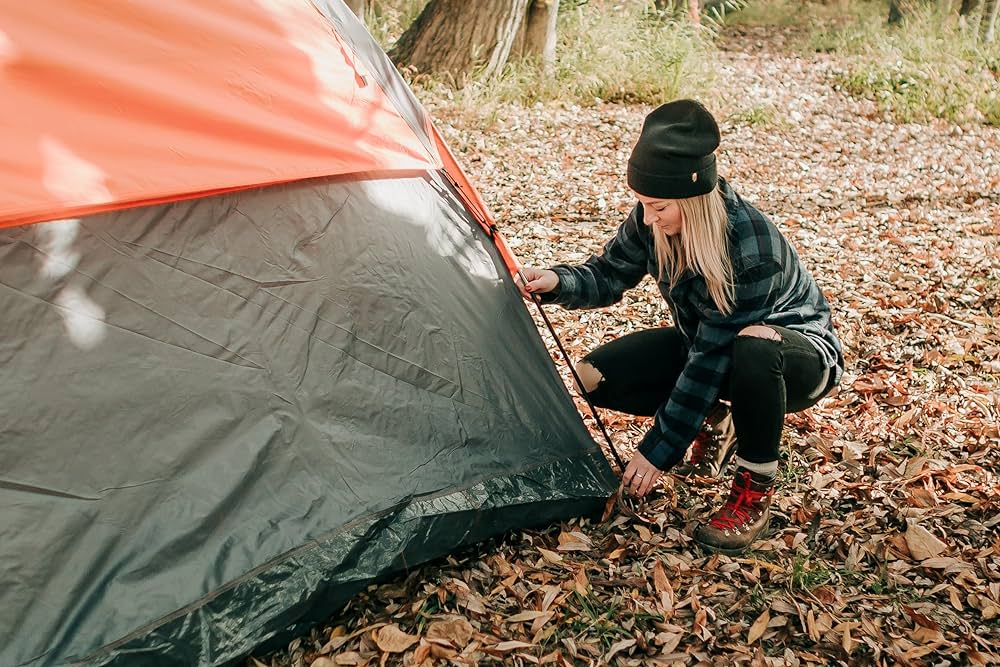
Find a clean, flat area where you can spread out your tent. This could be a backyard, driveway, or a large indoor space like a garage. Ensure the area is free from sharp objects that could damage the tent fabric.
Pre-Cleaning Inspection
- Set Up the Tent: Pitch the tent in your yard or a spacious area to inspect it fully.
- Check for Damage: Look for any tears, holes, or damaged zippers. Repair these issues before cleaning.
- Remove Loose Dirt: Shake out the tent to remove any loose dirt, leaves, or debris.
Cleaning the Tent
1. Spot Cleaning
- For localized stains or spots, follow these steps:
- Dampen the Area: Use a spray bottle filled with water to dampen the stained area.
- Apply Soap: Apply a small amount of mild soap directly to the stain.
- Gently Scrub: Use a sponge or soft cloth to gently scrub the stained area. Avoid vigorous scrubbing to prevent fabric damage.
- Rinse: Use a small amount of water to rinse off the soap from the spot-cleaned area.
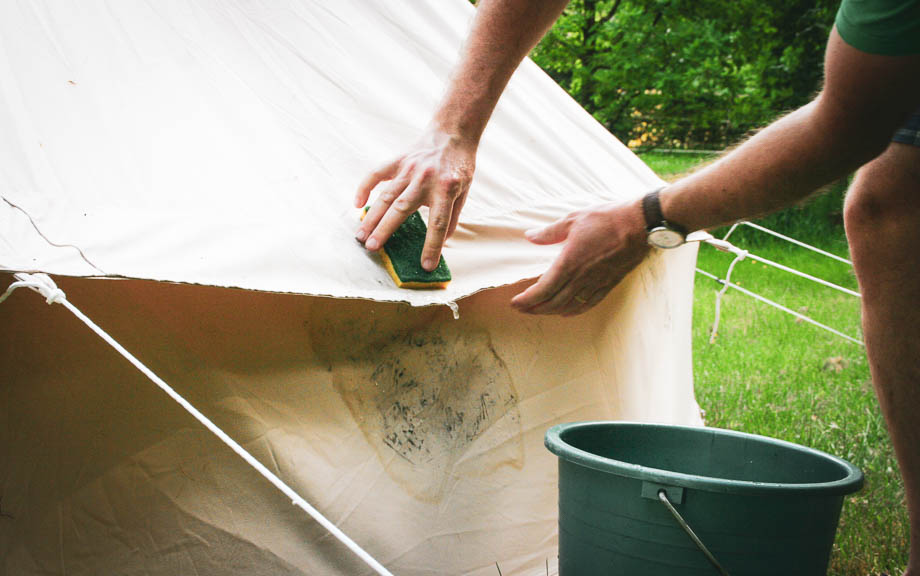
2. Full Tent Cleaning
For a thorough cleaning, follow these steps:
- Fill the Tub: Fill your large tub or bathtub with lukewarm water. Add the mild soap to the water and mix until it is evenly distributed.
- Submerge the Tent: Place the tent body and rainfly in the tub. Allow them to soak for 20-30 minutes. This helps to loosen dirt and grime.
- Gently Agitate: Use your hands to gently agitate the tent in the water, helping to remove dirt from the fabric.
- Clean Specific Areas: Use a sponge or soft cloth to clean any particularly dirty areas, such as the floor or high-contact points.
- Rinse Thoroughly: Drain the soapy water and refill the tub with clean water. Rinse the tent thoroughly to remove all soap residue. You may need to do this several times until the water runs clear.
- Check the Seams: Inspect the tent seams for any soap or dirt buildup. Use a soft brush to clean these areas if necessary.
3. Detailed Cleaning
Cleaning the Zippers: Zippers can accumulate dirt and debris, which can cause them to snag or break. Use a soft brush or old toothbrush to gently clean out any dirt or sand from the zippers.
Apply a zipper lubricant to keep the zippers running smoothly. This also helps in preventing rust and corrosion, especially if you’ve been camping in wet or salty environments.
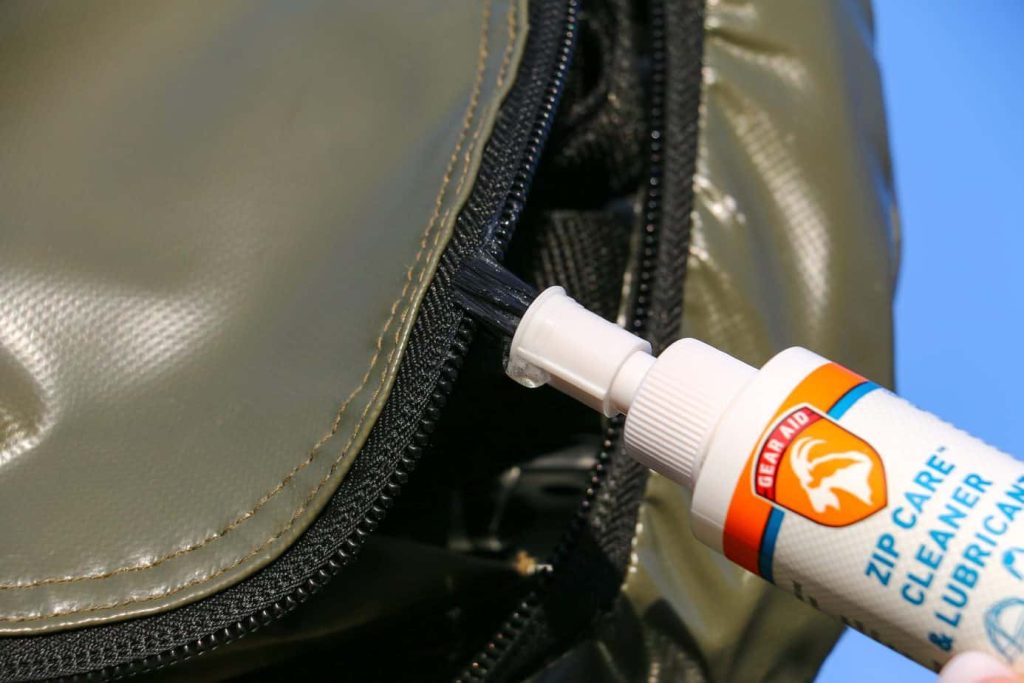
Cleaning the Poles: Tent poles can also get dirty and may need cleaning. Use a damp cloth to wipe down each pole, removing any dirt or grime. Check for Damage in the poles. Inspect the poles for any cracks or bends. Repair or replace damaged poles as necessary.

Drying the Tent
Proper drying is crucial to prevent mold and mildew growth:
- Shake Off Excess Water: Gently shake the tent to remove excess water.
- Air Dry: Lay the tent out on a clean, dry surface or hang it in a shaded area. Avoid direct sunlight, which can degrade the fabric.
- Separate Components: Ensure the tent body, rainfly, and footprint are separated for better air circulation.
- Dry Completely: Allow the tent to dry completely before storing it. This might take several hours to a full day, depending on the conditions.
Advanced Cleaning Techniques
Machine Washing (With Caution)
While not generally recommended, some tents can be machine washed on a gentle cycle if specified by the manufacturer.
- Use a Front-Loading Washer: A front-loading washer is less harsh on the fabric.
- Cold Water and Gentle Cycle: Use cold water and select the gentle cycle.
- Avoid Spin Cycle: The spin cycle can be too aggressive for tent fabrics. Opt for a rinse and gentle cycle without spinning.
- Use Mild Detergent: Use a mild, non-detergent soap specifically designed for technical fabrics.
Post-Cleaning Care
- Seam Sealing: After the tent is dry, inspect the seams. Seam sealer can help maintain waterproofing. Follow the instructions on your seam sealer product. Typically, you’ll apply it to the inside seams of the tent. Allow to cure and let the seam sealer dry completely. This usually takes several hours.
- Reapply Waterproofing: If your tent’s water repellency seems diminished, apply a waterproofing spray. Pitch the tent to ensure even application. Evenly spray the waterproofing product on the exterior of the tent, following the manufacturer’s instructions. Then allow the tent to dry completely before packing it away.
Storing the Tent
Proper storage extends the life of your tent:
- Choose a Cool, Dry Place: Store the tent in a cool, dry location to prevent mildew growth.
- Avoid Compression: Store the tent loosely in a breathable bag or hang it to avoid compressing the fabric and coatings.
- Ventilate Periodically: If storing for an extended period, periodically air out the tent to prevent any moisture buildup.
Dealing with Specific Issues
Mold and mildew can develop if the tent is stored wet. Here’s how to address this issue:
- Spot Clean with Vinegar: Mix a solution of 1 part vinegar to 1 part water. Apply it to the affected areas and let it sit for a few minutes.
- Scrub Gently: Use a soft brush to gently scrub the moldy areas.
- Rinse Thoroughly: Rinse the tent thoroughly with clean water.
- Dry Completely: Ensure the tent is completely dry before storing it again.
Regular Maintenance
Persistent odors can be a problem with tents. Here’s how to keep freshen your tent:
- Soak in a Baking Soda Solution: Fill the tub with water and add a cup of baking soda. Soak the tent for a few hours.
- Rinse Thoroughly: Rinse the tent thoroughly to remove all baking soda residue.
- Air Out: Air out the tent in a well-ventilated area until the odor is gone.
- Spot Cleaning: After each trip, spot clean any dirty areas with a damp cloth and mild soap.
- Check for Damage: Regularly check for and repair any small tears or seam leaks before they become bigger issues.
Lastly,
Cleaning and maintaining your tent is crucial for its durability and performance. Regular upkeep not only extends the life of your tent but also ensures that it remains a reliable and comfortable shelter for your outdoor adventures. By following these detailed steps, you can keep your tent in excellent condition, ready for many camping trips to come.
Remember, the key to a long-lasting tent is regular maintenance, prompt repairs, and proper storage. Happy camping!
